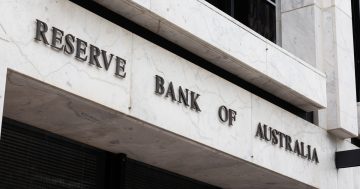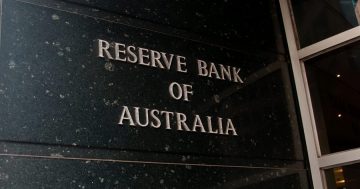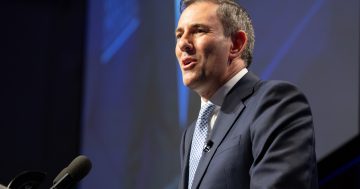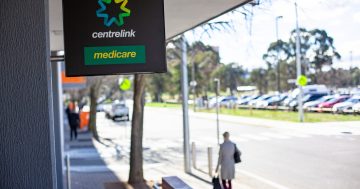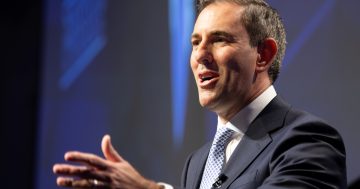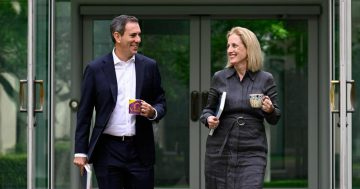Michael Janda* says economic modelling by a senior analyst at the RBA in September 2022 put the odds of an Australian recession at up to 80 per cent.
 Previously unpublished internal research from the Reserve Bank estimates that Australia’s risk of recession over this year and next could be as high as 80 per cent.
Previously unpublished internal research from the Reserve Bank estimates that Australia’s risk of recession over this year and next could be as high as 80 per cent.
The research, released as a result of a freedom of information request, includes modelling from a senior analyst in the RBA’s Economic Analysis Department.
The economic modelling, conducted in September 2022 and based on the bank’s economic forecasts from August 2022, considered the risk of recession as the RBA raised interest rates at the fastest pace in recent history.
Using the Sahm Rule, which defines a recession as when the quarterly average of the unemployment rate rises by at least 0.75 per cent above its minimum over the previous 12 months, the senior analyst said some models put the risk of recession at 65 per cent or more over the next two years.
“Estimates suggest the probability of a recession over the next two years could be as high as 80 per cent,” the note stated.
“If a recession does occur, it is most likely sometime over the next four quarters. This is in line with intensifying market commentary predicting a recession in the first half of 2023.”
Using a different type of model reduced the recession risk, but still found the odds of Australia remaining on the “narrow path” talked about by RBA governor Philip Lowe of getting inflation back below 3 per cent without a major economic contraction at little better than 50-50.
“The likelihood of ending up on the ‘narrow path’ is around one in two,” the senior analyst noted.
“Allowing policy to respond increases this probability modestly, both because policymakers can tighten more aggressively to combat inflation and because they can cut rates to avoid a recession, when required.”
This research also offers some insight as to why the Reserve Bank may have eased off on its monetary policy tightening, from 0.5 percentage point increases from June to September to a 0.25 of a percentage point rise in October.
At the same time, the RBA has been willing to tolerate inflation sitting just above its 2-3 per cent target up to the end of its two-year forecast horizon.
“Around 70 per cent of all simulations where inflation returns to just above the target band by the end of the horizon do not involve a recession,” the modelling predicted.
“The proportion with inflation getting inside the band without a recession is notably lower, at around 55 per cent.”
This might go towards explaining why Mr Lowe and the RBA board have generally been resisting calls to get inflation back within the band faster.
Mr Lowe has repeatedly said that to get inflation down more quickly would cost tens, and possibly hundreds, of thousands of jobs, and that he believes this trade-off is not worth it.
“Some of the simulations with inflation returning to target involve significant increases in the unemployment rate,” the September research noted.
“The upper bound of the 75 per cent interval peaks at between 4.5 and 5 per cent across both simulations.
“Under the Taylor Rule, the worst outcome has the unemployment rate 2 percentage points higher than in the central forecast.
“This suggests that returning inflation to target could involve significant job losses even when monetary policy responds to developments.”
The analyst noted that the odds of an Australian recession were considerably reduced if the US economy remained out of recession, while a severe US downturn made a local recession much more likely.
RBA models 4.8 per cent cash rate
It may horrify some borrowers to know that the RBA’s Economic Analysis Department modelled a cash rate peak of 4.8 per cent as recently as February, ahead of the March board meeting.
It also modelled the likely effects on inflation and unemployment of keeping the cash rate on hold at 3.35 per cent, as it was at that time, and of a peak of just under 4 per cent, roughly where the cash rate is now at 3.85 per cent.
Obviously, the RBA board rejected the “front-loaded” scenario, which would have had the cash rate at 4.8 per cent by now.
“All cash rate paths bring inflation within the target band by the end of the SMP [Statement on Monetary Policy] forecast horizon (mid-2025),” the February research note predicted.
“The ‘steady climb’ and ‘front-loaded’ paths are the quickest to return inflation to the target band in late-2024.
“These paths also push the unemployment rate up to the assumed NAIRU (4½ per cent in the February 2023 SMP), narrowly avoiding a Sahm recession.”
The lower cash rate peaks also see unemployment eventually rise to 4.5 per cent, but it takes a year longer to happen, meaning more people stay in work for an extended period.
Given that the most recent Statement on Monetary Policy does not have inflation coming within the target band until June 2025 and the unemployment rate only reaching 4.5 per cent by June 2025, it seems likely that the RBA is currently expecting to remain patient and unlikely to raise rates much further to get inflation down faster.
*Michael Janda is the ABC’s Online Business Reporter.
This article first appeared at abc.net.au.


